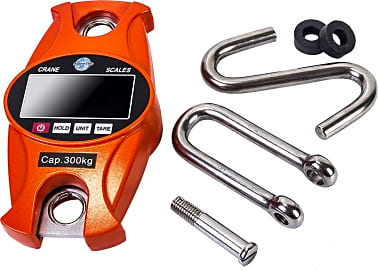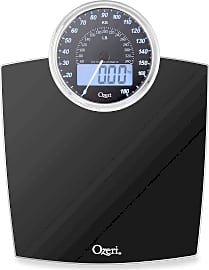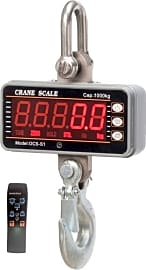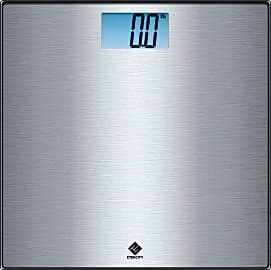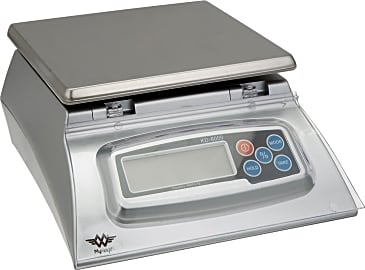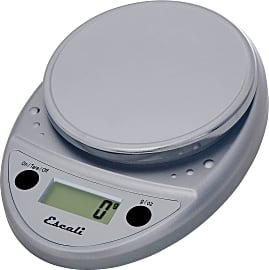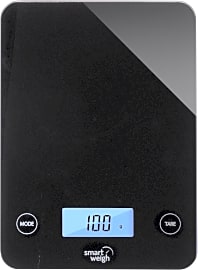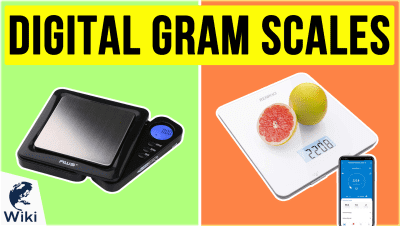The 10 Best Digital Scales

This wiki has been updated 40 times since it was first published in May of 2015. Whether it's a gemstone, a healthy meal portion, your own body, or the fish you just caught, you're going to need something to tell you exactly how much it weighs. Our selection of digital scales includes models that sit on kitchen counters, reside on bathroom floors, fit into pockets, or hang from ceilings or trees, so you're sure to find the right one for virtually any task. When users buy our independently chosen editorial recommendations, we may earn commissions to help fund the Wiki.
Editor's Notes
September 11, 2020:
In selecting our digital scales, we wanted to include several types for various tasks and environments. On that note, we added some hanging models, kitchen varieties, and body analysis options. We prioritized selections that offer readings in several measurements, and those that have robust construction.
When determining the weight of a small trailer or big game kill, the iDili Crane OCS-S1 and the Modern Step Heavy Duty Hanging can be useful. The first can accommodate over 2,000 pounds, and the second can measure items up to 600 pounds. They're both made with steel hooks, too, and should withstand a lot of use.
On the opposite end of the spectrum, if you're looking to weigh tiny quantities or naturally lightweight stuff like flour or jewelry, the Escali Primo P115, which offers readings in 0.05-ounce increments, and the Smart Weigh SWS Elite, which can detect something as light as 0.01 grams, can be useful. The Smart Weigh GLS-20B is a great kitchen item because it has such a small profile, so if your counters are overloaded with appliances as it is, you can just tuck it away in a drawer. While it had a small footprint, the Ohaus Compact CS2000 was inconsistent in its readings, so we removed it during this update.
Those hoping to keep an eye on their size and health might like the Withings WBS05 and the Tanita BC-533 Glass Innerscan, both of which provide plenty of insight into the body, notifying users of their muscle mass, BMI, and more. The Yunmai Premium, which we previously recommended, should have taught users about their body composition, but it struggles to sync up with fitness trackers as promised, so we eliminated it.
March 19, 2019:
Given the fact that this category includes a variety of scale types, it was important for me to ensure that there was a balance among the selections. That said, body weight scales are probably among the most sought out modes among the bunch, and the excellent smartphone interface that accompanies the Yunmai Premium boosted it up to the top spot. A good method for weighing out food portions is equally important for the body conscious, and the portability of the Smart Weight SWS sent it all the way up to the number two slot. The other side of that utility issue bumped the hanging model by Modern Step out of the top three.
Special Honors
Support Plus Extendable Display Scale If craning your neck to look down at the scale is a nuisance, you might appreciate that the telescoping screen on the Support Plus Extendable Display can be propped up to 46 inches for a comfortable viewing angle. It can support 550 pounds on its robust tempered glass base, has large-font numbers, and is reasonably priced. supportplus.com
Acaia Lunar Espresso Scale Created for a commercial environment, the Acaia Lunar Espresso Scale has an anodized aluminum body and has been coated with a water-resistant spray to prevent damage to its electronic internal parts. As its name says, it's meant to weigh shots of a popular high-caffeine beverage. It comes with a 100-gram calibration weight and a two-year warranty, and is Bluetooth compatible with the company's apps. acaia.co
A Brief History Of Scales
In the 20th century, electrical scales were introduced, which could deduce a weight by running a mild electrical current through the subject.
If your only experience with scales involves cursing at them for lying to you, then you may be surprised to learn how prominent of a role they've played in human history. Everything from law to commerce has been shaped by scales, making them one of the most enduring — and useful — tools mankind has ever developed.
Drawings of scales date back to 3500 B.C.E. in Egypt, where they were used to mete out justice. However, the oldest actual specimen was found in the Indus River valley, near modern-day Pakistan. Likely used around 2000 B.C.E., this scale was simply a balance using two plates attached to a pole. To use it, you placed an object on one plate, and then piled the other one with weight-setting stones until you found its balance.
The Romans developed a model that used a hook, which eventually led to the creation of platform scales. However, their scales backfired on them after Rome was captured by the Celtic chief Brennus in 390 BC. He demanded 1,000 pounds of gold as ransom, and when the Romans complained that he used rigged measurements, Brennus tossed his sword on top of the weights and proclaimed, "Woe to the vanquished!"
The basic balance design would remain largely unchanged until the 15th century, when Leonardo da Vinci created the graduated dial scale, which could achieve automatic balance. His invention was improved upon by the French mathematician Gilles Roberval, who made it more accurate by devising a system to evaluate the lever it used.
The spring scale would follow a few decades later, the brainchild of British balance maker Richard Salter. This model used the tensile strength of a coiled spring to figure out the weight of a given object. Spring scales are still in use today, although their accuracy is questionable.
In the 20th century, electrical scales were introduced, which could deduce a weight by running a mild electrical current through the subject. This process is known as impedance, and can also be used to determine the ratio of fat and muscle that the subject possesses.
It remains to be seen what the future holds for scales, but one thing remains clear: they'll take their secrets to the grave if they know what's good for them.
Finding The Right Digital Scale For You
Before you can find the perfect scale for your needs, you must first determine what those needs are. Are you trying to track your weight loss goals? Do you need to measure out the exact amount of food you're consuming? Or are you trying to determine just how much that trout you caught weighs?
Just be careful, because a bad scale can really...weigh you down.
Once you know what you need it to do, you'll find it much easier to find the right model. Keep in mind, however, that most scales are designed with a specific purpose in mind, and aren't likely to be very useful outside of that very limited scope. So yes, you can step on your bathroom scale with that trout in your arms, but that measurement won't be nearly as accurate as one you'd get from a hook scale designed for weighing fish and game.
One of the first things to look at is the scale's capacity. Many of them cut off at a certain point, so you'll likely be disappointed if you try to weigh yourself on one that has a 30-pound limit. Likewise, you probably won't want to count calories using a large industrial scale, unless you're really trying to bulk up.
The scale's accuracy is also important. Do you need to know the measurement down to the ounce, or is a general ballpark figure good enough? Again, this will likely depend on its intended use, but just be aware that you'll likely pay more for greater accuracy.
Finally, take note of its size and where you expect to put it. Do you want to devote a good chunk of your counter space to a food scale? Are you okay with devoting precious garage space to an industrial scale? These are questions to ask before you buy, so that you're not scrambling to find a spot for your new toy after you've already gotten it out of the box.
If you take each of these factors into consideration when shopping, you're much more likely to find a scale that suits your needs. Just be careful, because a bad scale can really...weigh you down.
How To Use Your Digital Scale
Using a scale might seem like a no-brainer, but if you're not using yours correctly, it can really throw off your readings and sabotage your measurements. Now, obviously each scale will have its own instructions that you should follow; that being said, however, there are a few ways to ensure you get the most accurate results possible.
You should also check to see if your particular scale can handle off-center weighing.
You'll need a flat surface for your scale to rest upon before you get started. If it's laying at an angle, that will throw off the distribution of materials and undermine the readings. This is a basic step, but if you get it wrong, you're dead in the water.
It's important to calibrate it regularly, as well. Most models will come calibrated by the manufacturer, but even so, you'll want to check yours regularly. To do this, press the calibration button and wait for the display to zero out. Then, place a calibration weight on it for about five seconds, after which the unit should reset on its own.
You should also check to see if your particular scale can handle off-center weighing. Many units require the load to be placed directly in their center to give accurate readings, while others can determine correct weights even if the subject is in the corner.
Ultimately, scales are fairly simple machines, and it shouldn't take you very long to get the hang of yours. You'll soon be weighing everything you can get your hands on — and that can get you a lucrative job guessing weights at a carnival.



